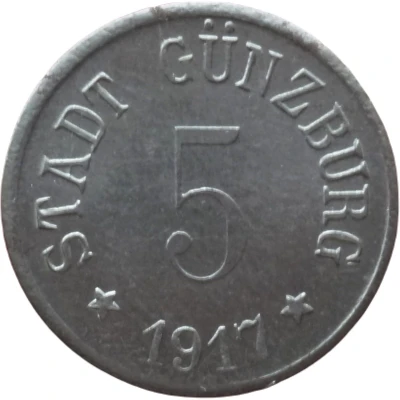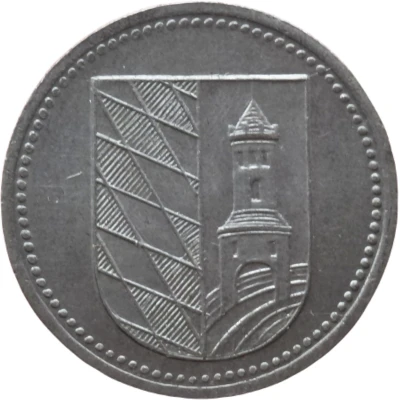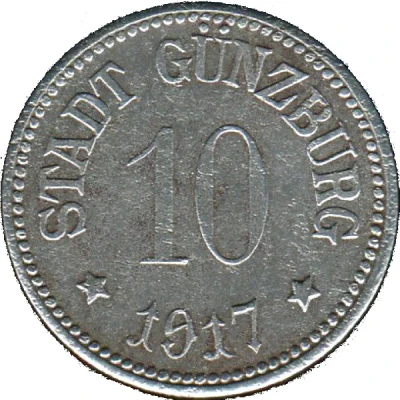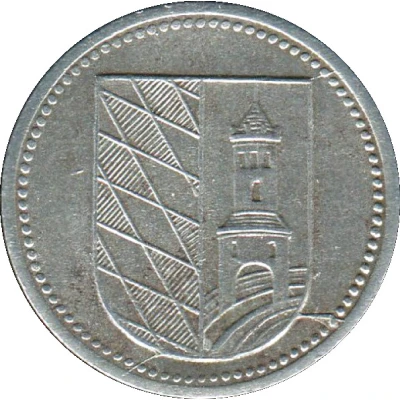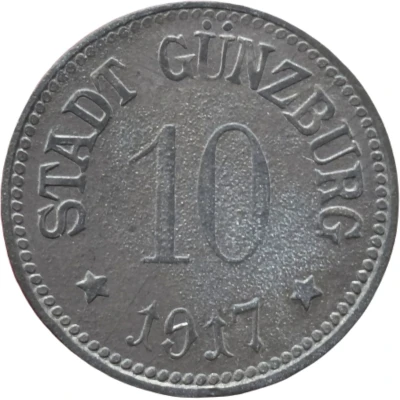
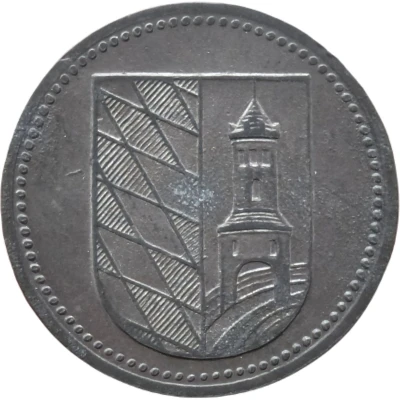

© Willem63 (CC BY-NC-SA)
10 Pfennigs - Günzburg
1917 year| Zinc (also Nickel plated) | 1.8 g | 20.0 mm |
| Issuer | City of Günzburg (Federal state of Bavaria) |
|---|---|
| Emperor | William II (Wilhelm II) (1888-1918) |
| Type | Standard circulation coin |
| Year | 1917 |
| Value | 10 Pfennigs (10 Pfennige) (0.10) |
| Currency | Mark (1914-1924) |
| Composition | Zinc (also Nickel plated) |
| Weight | 1.8 g |
| Diameter | 20.0 mm |
| Thickness | 0.9 mm |
| Shape | Round |
| Technique | Milled |
| Orientation | Medal alignment ↑↑ |
| Demonetized | Yes |
| Updated | 2024-10-04 |
| Numista | N#145591 |
|---|---|
| Rarity index | 82% |
Reverse
Beaded rim surrounding Coat of Arms centered
Edge
Plain
Comment
Issuing body: [Stadt, Bayern].Interesting fact
One interesting fact about the 10 Pfennigs - Günzburg 1917 coin is that it was minted during a time of economic and political turmoil in Germany. The country was experiencing hyperinflation, and the value of the German mark was plummeting. In response, the government introduced a new currency, the "Notgeld," which included coins like the 10 Pfennigs - Günzburg 1917. These coins were made of zinc and nickel-plated, and were designed to be more durable and practical for everyday use than the paper notes that were being used at the time. Despite the challenges of the time, the 10 Pfennigs - Günzburg 1917 coin remains a fascinating piece of numismatic history.
